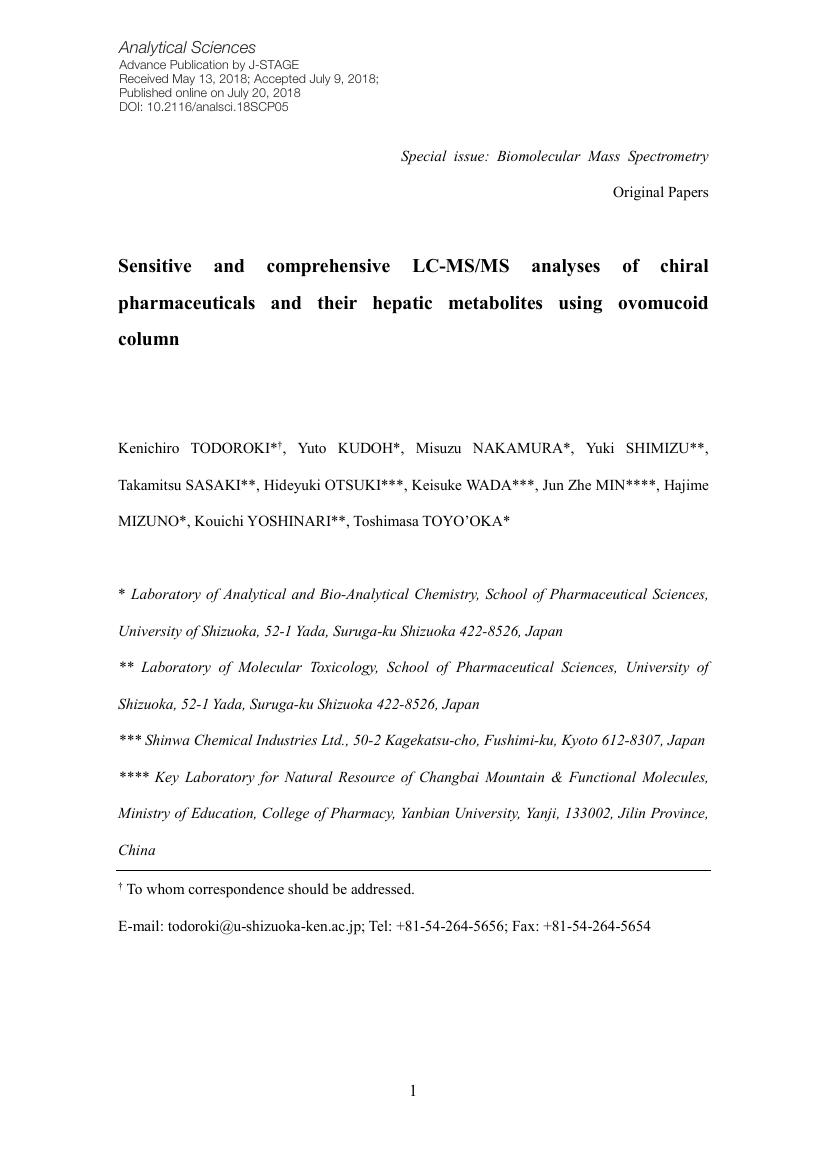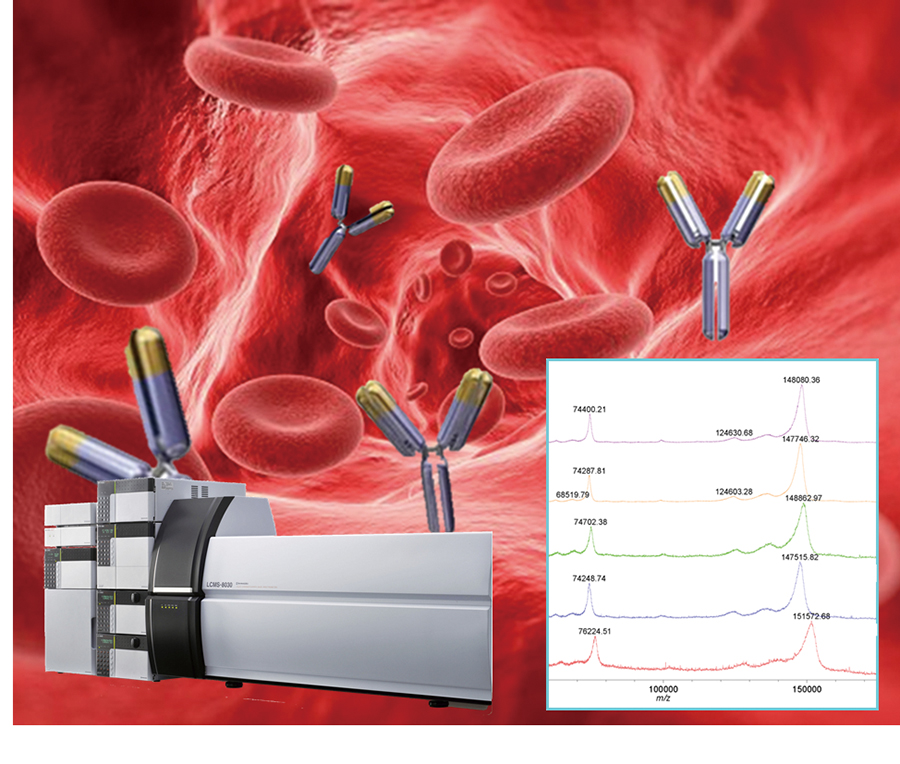- 著者
- Sae SOTOMATSU Tomohiro YAMADA Hajime MIZUNO Hideki HAYASHI Toshimasa TOYO’OKA Kenichiro TODOROKI
- 出版者
- The Society for Chromatographic Sciences
- 雑誌
- CHROMATOGRAPHY (ISSN:13428284)
- 巻号頁・発行日
- pp.2019.013, (Released:2019-06-21)
- 参考文献数
- 16
- 被引用文献数
- 6
To construct liquid chromatography (LC)-based bioanalytical method for therapeutic monoclonal antibodies (mAbs) and antibody-drug conjugates (ADCs), twelve commercially available therapeutic mAbs and one ADC were chemically reduced, and the generated fragments were analyzed by high-temperature reversed-phase LC. For most therapeutic mAbs, single peaks of light and heavy chains were detected, indicating a possibility of homogeneous LC analysis using light chains. However, characteristic fragmentations were observed in infliximab, pembrolizumab, ramucirumab, and trastuzumab emtansine. We also performed a simple validation using the fragmented light chains for the bioanalysis of bevacizumab. The limit of detection (LOD) and limit of quantification (LOQ) of bevacizumab were 0.63 and 2.10 µg/mL, respectively, with dithiothreitol reduction, and 0.74 and 2.48 µg/mL, respectively, with tris (2-carboxyethyl) phosphine reduction. These results indicate that both the reductants confer sufficient linearity, LOQ, and LOD for the light chain analysis of bevacizumab. Thus, this method, combined with affinity purification, can be used for the bioanalysis of bevacizumab.
- 著者
- Kenichiro TODOROKI Yuto KUDOH Misuzu NAKAMURA Yuki SHIMIZU Takamitsu SASAKI Hideyuki OTSUKI Keisuke WADA Jun Zhe MIN Hajime MIZUNO Kouichi YOSHINARI Toshimasa TOYO’OKA
- 出版者
- The Japan Society for Analytical Chemistry
- 雑誌
- Analytical Sciences (ISSN:09106340)
- 巻号頁・発行日
- pp.18SCP05, (Released:2018-07-20)
- 被引用文献数
- 6
- 著者
- Kenichiro TODOROKI Tomohiro YAMADA Hajime MIZUNO Toshimasa TOYO’OKA
- 出版者
- The Japan Society for Analytical Chemistry
- 雑誌
- Analytical Sciences (ISSN:09106340)
- 巻号頁・発行日
- vol.34, no.4, pp.397-406, 2018-04-10 (Released:2018-04-10)
- 参考文献数
- 74
- 被引用文献数
- 26
The increase in the use of therapeutic monoclonal antibodies (mAbs) and antibody-drug conjugates (ADCs) has made the detailed bioanalysis of these drugs essential not only for planning optimal therapeutic programs for clinical practice, but also for evaluating the biological equivalencies in the development of other biosimilars. The ligand binding assays that are widely in use now are being replaced rapidly by the highly accurate, sensitive, and selective analytical method using a mass spectrometer. This review will discuss the progress in and challenges observed during the development of a mass spectrometry-based bioanalytical method for therapeutic mAbs and ADCs.

